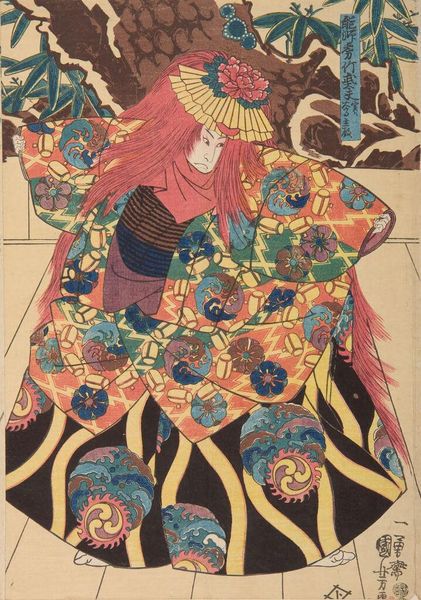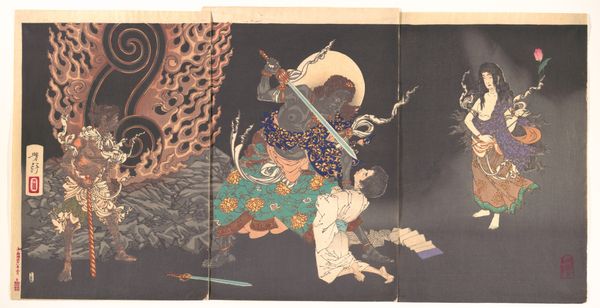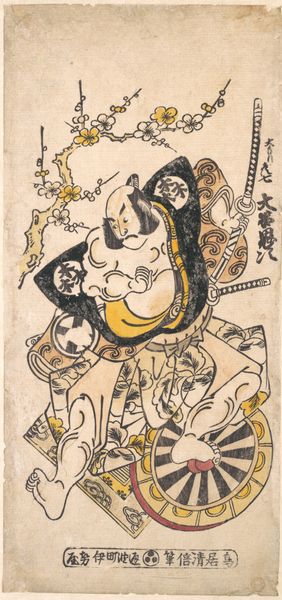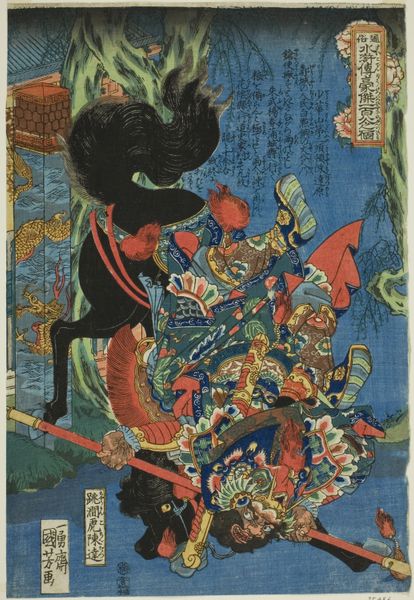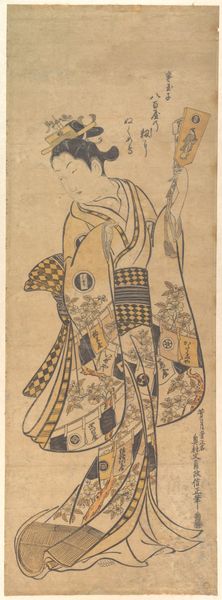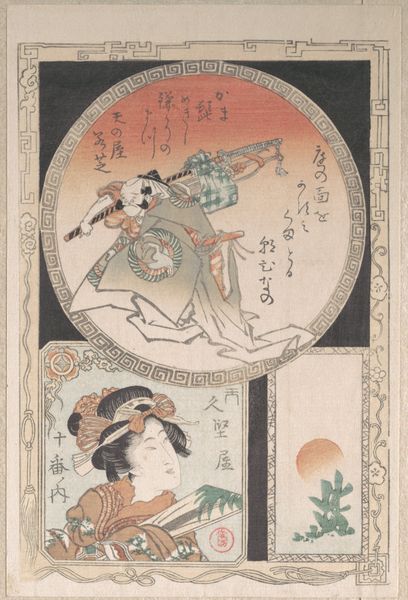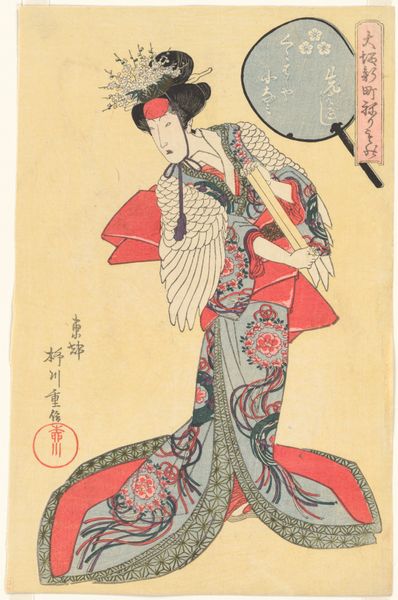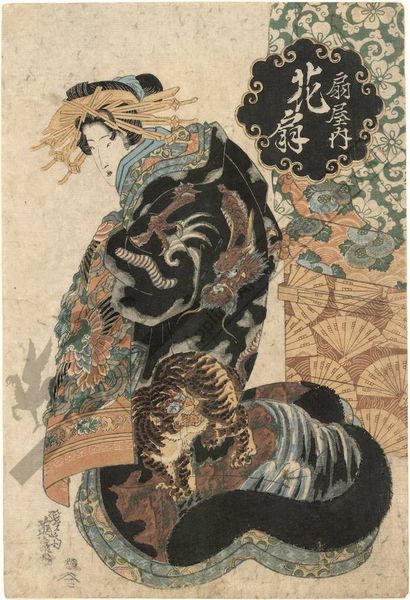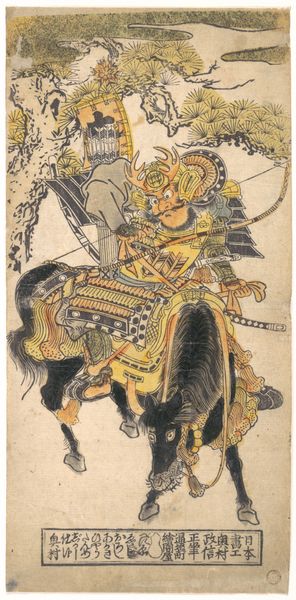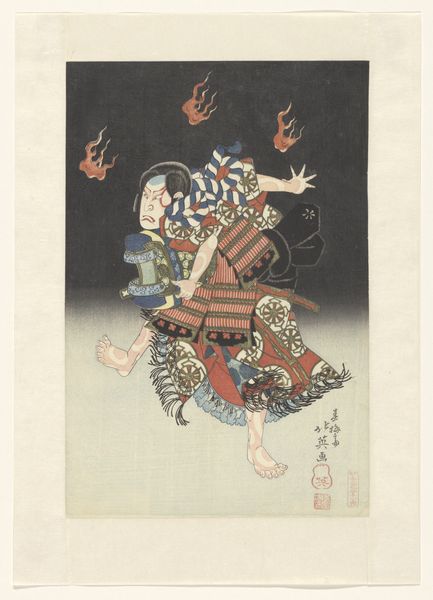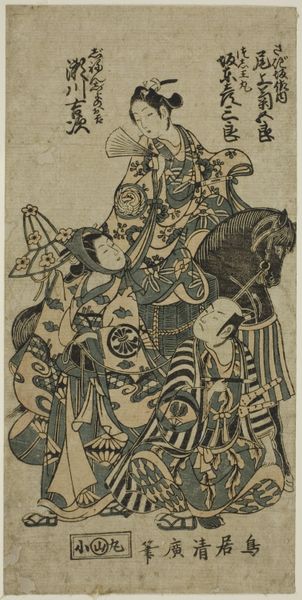
#
toned paper
#
handmade artwork painting
#
personal sketchbook
#
coloured pencil
#
sketchbook drawing
#
watercolour bleed
#
watercolour illustration
#
cartoon carciture
#
sketchbook art
#
watercolor
Dimensions: height 180 mm, width 123 mm
Copyright: Rijks Museum: Open Domain
Editor: So, this is "The Ogres of Oyeyama" from 1891. It appears to be watercolor and coloured pencil on toned paper. It looks like an illustration for a children's book. What really stands out to me is the contrast between the fierce ogre and the more delicately rendered samurai figure. What do you see in this piece? Curator: I see a powerful visual text deeply embedded in Japanese folklore and its intersection with late 19th-century colonialism. The "Japanese Fairy Tale Series," including this image, was produced during a time when Japan was actively negotiating its identity on the world stage. How does the presentation of this folktale reflect broader power dynamics, do you think? Editor: Well, the printing details mention Tokyo and Yokohama. Were these prints marketed to Westerners? Curator: Precisely. They catered to a Western audience eager for exotic narratives. The ogre, a traditional symbol of disruption, is presented for consumption. And the samurai figure, who enforces control... what might that tell us about how Japan wished to be perceived? Were these images deployed to assert some kind of cultural strength? Editor: So the friendly looking image may have had some pretty significant impact given when and where it was created and consumed... Interesting to consider how political images are even when they appear simple and straightforward! Curator: Exactly. It is always useful to consider not only what is represented, but who is doing the representing and what political environment influenced their decisions. A look at the historical record always serves to give art additional richness.
Comments
No comments
Be the first to comment and join the conversation on the ultimate creative platform.
